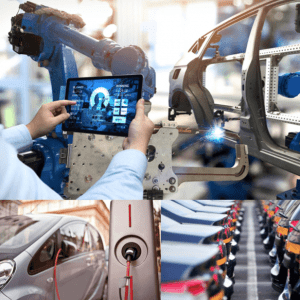California recently announced its Advanced Clean Cars II plans to phase out sales of gasoline-powers automobiles by 2035. The regulation lays out a step-by-step plan to ensure that all new cars and light trucks sold in California by 2035 will be zero-emission vehicles, including plug-in hybrid electric vehicles.
Under California’s new rules, by 2035, automakers will be prohibited from selling cars, pickup trucks, minivans, SUVs, or other passenger vehicles that generate greenhouse emissions. However, after the rules go into effect, drivers can continue driving gas-powered vehicles purchased before the 2035 deadline.
The proposal has two elements. First, to meet air quality and climate change emissions standards, the Zero-Emission Vehicle Regulation require an increasing number of zero-emission vehicles, such as battery-electric, hydrogen fuel cell electric, and plug-in hybrid electric vehicles.
Second, while the industry transitions to 100% electrification by 2035, the plan revises the Low-Emission Vehicle Regulations to add progressively strict standards for gasoline cars and heavier passenger trucks to continue reducing smog-forming emissions.
Following California’s lead, 17 additional US states have already adopted its tailpipe emission standards, which are stricter than the federal government’s. Among those, 15 states have also taken preliminary moves toward implementing the new rules and supporting its zero-emission vehicle requirements.
The benefits of the regulation are numerous, and it will grow yearly. The new regulation speed up the requirements of the percentage of zero-emission light-duty cars delivered annually starting in 2026; 35% of new ZEV (zero-emission vehicle) and PHEV (plug-in hybrid electric vehicle) sales will occur that year, increasing to 68% in 2030 and 100% in 2035.
According to a CARB (California Air Resources Board) analysis, the legislation will result in a 25% reduction in smog-causing pollutants from light-duty vehicles by 2037, allowing for compliance with federal air quality standards. All Californians will gain from this, but it will significantly help the state’s communities along freeways and other heavily trafficked thoroughfares that are the most economically and environmentally burdened. The restriction will prevent cumulative negative health effects in the range of $13 bn from 2026 to 2040, including 1,290 fewer cardiopulmonary deaths, 460 fewer hospital admissions for respiratory or cardiovascular conditions, and 650 fewer trips to the emergency room for asthma.
Months earlier, Europe made a similar announcement, but the fundamental difference in the European approach was reducing the number of cars on the road.
“Increasingly, Europe’s urban planners are modifying neighbourhoods to restrict car entry — while encouraging ‘active mobility,’ said Gareth Macnaughton, director of innovation at the European Institute of Innovation and Technology Urban Mobility Initiative.
As it is set that by 2035 all new cars sold in the European Union and California should be zero-emission. As such, experts from the Netherlands and California will work together. The Dutch Environment Minister Vivianne Heijnen and Yana Garcia Gonzalez, Secretary for Environmental Protection of California, signed the agreement during the Dutch trade mission to San Francisco.
The Netherlands and California both have big ambitions regarding electric driving. The Netherlands is a pioneer in Europe and California in the US.
Nevertheless, the European and Californian initiatives have encountered rejection due to strict rules from car maker manufacturers and countries that rely mainly on this economy. However, both plans seem to be moving forward, and as part of a global initiative to reduce carbon emissions, most global Parcel carriers are implementing strategies to reduce energy consumption and introduce clean energy technologies.
For more in dept-information, download the Electrifying Last Mile Delivery: Changing Fleet Composition & Sustainability Investments Whitepaper, which provides a snapshot of major express companies’ climate goals and fleet compositions, including FedEx, UPS and Royal Mail. The paper also examines some key electric vehicle manufacturers to show you what each has to offer.
Source: Transport Intelligence, 8th September 2022
Author: Marta Chiriatti





